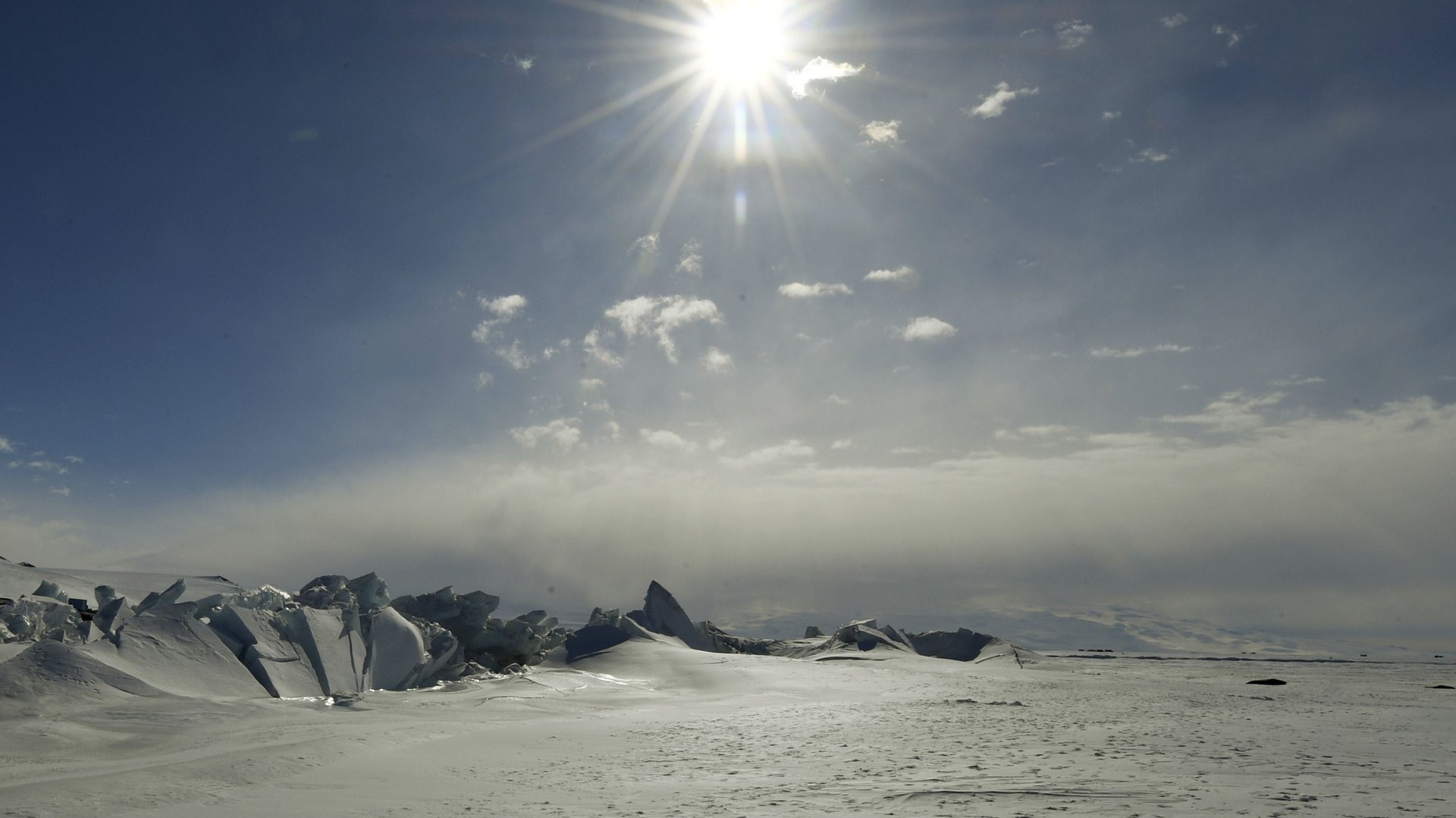Researchers think they’ve found the oldest continuous Antarctic ice cores ever
When most of us look at images of Antarctica’s ice, we see a cold, uniform landscape that evokes thoughts of penguins, seals, and an immediate need for hot chocolate. Climate scientists see potential portals into our planet’s past.


When most of us look at images of Antarctica’s ice, we see a cold, uniform landscape that evokes thoughts of penguins, seals, and an immediate need for hot chocolate. Climate scientists see potential portals into our planet’s past.
This week, researchers from the University of Washington and the University of Maine published (paywall) a paper suggesting they’ve found the oldest continuous ice records ever, dating back a million years ago. This ice would give researchers 200,000 more years’ worth of data compared to the previous oldest ice core on record, which was 800,000 years old.
The layers of ice that cover Antarctica work like geological time capsules. They’re able to capture bubbles of air that can be dated and analyzed to give researchers an idea of what the climate was like hundreds of thousands of years ago. Antarctic ice cores, for example, have been used to help prove that excess carbon dioxide in the atmosphere from industrial activity has led to climate change.
Researchers have found bits of old ice before. Last year, scientists from Princeton found bits of ice from 2.7 million years ago on the continent, and in 2016 researchers found another chuck of ice dating back a million years. Although these were both instances of ice drilled up in cores, the cores themselves weren’t continuous.
The real challenge is finding ice cores that work like a continuous vertical timeline. Glacial ice flows, albeit super slowly in a lot of cases. Scientists want to find ice that has remained as stationary as possible, so that its layers build up more or less on top of each other millennia.
In this case, the research team camped out on the Allan Hills Blue Ice Area, on the southern part of the continent about halfway between the east and west split. This is where the other ancient ice cores were found. The area is a windy desert, receiving less than a centimeter (half an inch) of snow annually. It usually blows away before it can accumulate, exposing eerie blue ice on the ground.
Over the summer months (where temperatures still average out to a balmy 14°F, or -10°C), the team strapped in radar sensors on sleds, and pulled them across the ice while riding snow mobiles. Based on these reflected radio waves and computer models, they believe they’ve found a continuous ice that extends just over 2 km (1.2 miles), and spans a million years just about 5 km away from the site where the previous 2.7 million-year-old fragments were found.
The team hopes that drilling in this spot could explain more about Earth’s ice ages, which, about a million years ago, shifted from happening every 41,000 years to every 100,000 years, Howard Conway, a glaciologist at the University of Washington, explained in a press release. Atmospheric data from these ice cores could help explain why this happened.
Now all they have to do is drill them. The team has applied to a grant from the National Science Foundation and hopes to get back out there as soon as possible.